Snowboards Guide
Type (All-Mountain, Freestyle, Freeride)
There are three main types of snowboards: All-Mountain, Freestyle, and Freeride.
For those who like to explore various terrains, a versatile All-Mountain snowboard is an excellent choice. The Jones Mountain Twin is renowned for its balance, offering a mix of freestyle playfulness and freeride power. With a true twin shape, it performs well in both directions and is suitable for riders who enjoy all aspects of snowboarding.
If your preference is park riding, going for a Freestyle snowboard is a wise decision. The Burton Custom Flying V is a popular choice among freestyle enthusiasts. It features a combination of camber and rocker, allowing for easy maneuverability and exceptional stability on any park obstacle. Paired with the efficient Flying V bend and a true twin shape, this board ensures optimum freedom and creativity for tricks and jumps.
For those seeking big mountain adventure and pristine powder lines, the ideal selection is a Freeride snowboard. Consider the Lib Tech Orca, which excels in deep snow and uneven terrains due to its floaty nose and narrower tapered tail. Its C2X camber profile provides stability at high speeds, ensuring a remarkable riding experience in backcountry areas.
By understanding the differences between snowboard types and selecting a board that corresponds to your preferred riding style, you can generate the best performance and enjoyment on the slopes.
Shape (Directional, Twin, Directional Twin)
Snowboards come in three main shapes: Directional, Twin, and Directional Twin. A directional shaped board is designed for riding in one direction only, with a slightly tapered tail for better control and stability. One great example of a directional board is the Burton Flight Attendant Snowboard. It features a 10mm taper and a wider nose for effortless float and control in powder.
On the other hand, a twin-shaped board is symmetrical in shape and can be ridden in both directions. These boards are ideal for freestyle riders who enjoy riding switch (backward). The Capita Defenders of Awesome Snowboard is a popular choice in this category, featuring a true twin shape and a medium flex, making it suitable for the park and all-mountain riding.
Lastly, there is the directional twin shape, which combines the features of a directional and a twin board. This shape provides the versatility of a twin board but with a slight directional setup for added stability and control. An excellent example of a directional twin board is the Jones Explorer Snowboard. It features a 10mm setback stance and a medium-stiff flex for all-mountain performance.
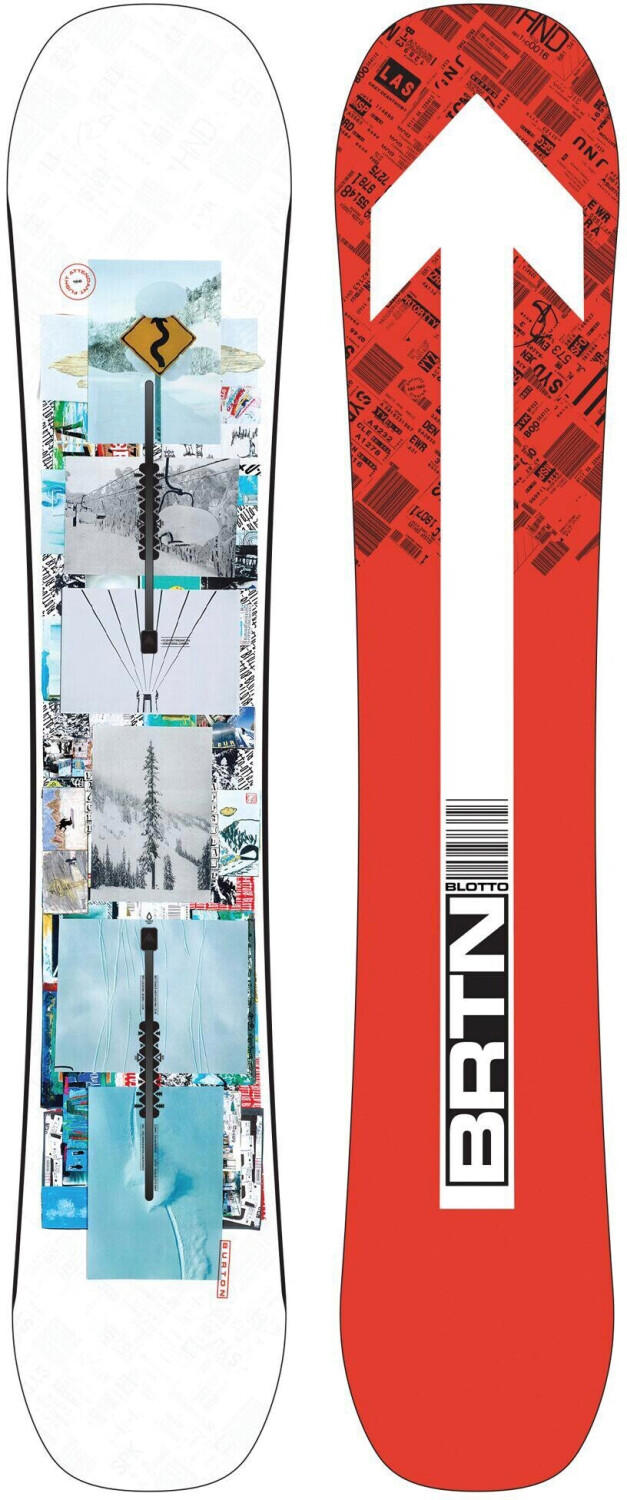
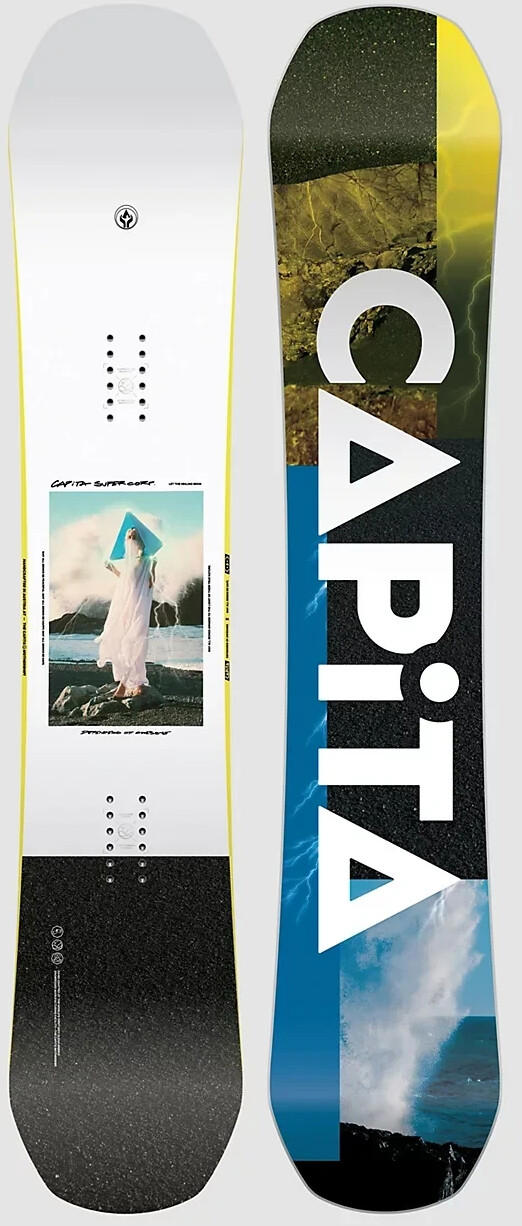
It's important to choose a snowboard shape that aligns with your riding style and preferences, whether it's directional for stability, twin for flexibility, or directional twin for a balance of both.
Length
The length of a snowboard typically corresponds to a rider's height, weight, and skill level. A longer snowboard allows for greater stability and allows more experienced riders to gain more speed, while a shorter snowboard is more maneuverable and offers easier control for beginners.
If you're looking for a longer snowboard suited for more experienced riders, the Burton Custom X Snowboard is a great choice. With lengths ranging from 156cm to 166cm, it offers a longer profile that ensures stability and increased control at higher speeds. Alternatively, if you're a beginner who prefers a shorter snowboard, consider the Rome Mechanic Snowboard. With lengths ranging from 138cm to 156cm, it provides a more maneuverable option for riders starting out.
In summary, considering the length of a snowboard is crucial in selecting one that aligns with your height, weight, and skill level. Opt for a longer snowboard like the Burton Custom X Snowboard if you're an experienced rider seeking more stability, or choose a shorter option like the Rome Mechanic Snowboard if you're a beginner looking for easier control and maneuverability on the slopes.
Width
The width of a snowboard is determined by the waist width, which is the narrowest point on the board. Having the right width is crucial for achieving optimal performance and preventing heel or toe drag. Riders with smaller feet can opt for a narrower snowboard, while those with larger feet will want a wider board to avoid dragging their boots. For example, the Jones Mountain Twin is available in different waist widths, catering to different foot sizes. Another option is the Capita Defenders of Awesome which also offers various waist widths to accommodate different foot sizes. Lastly, if you have bigger feet, you may want to consider the Ride War Pig Wide which specifically caters to riders with larger foot sizes.
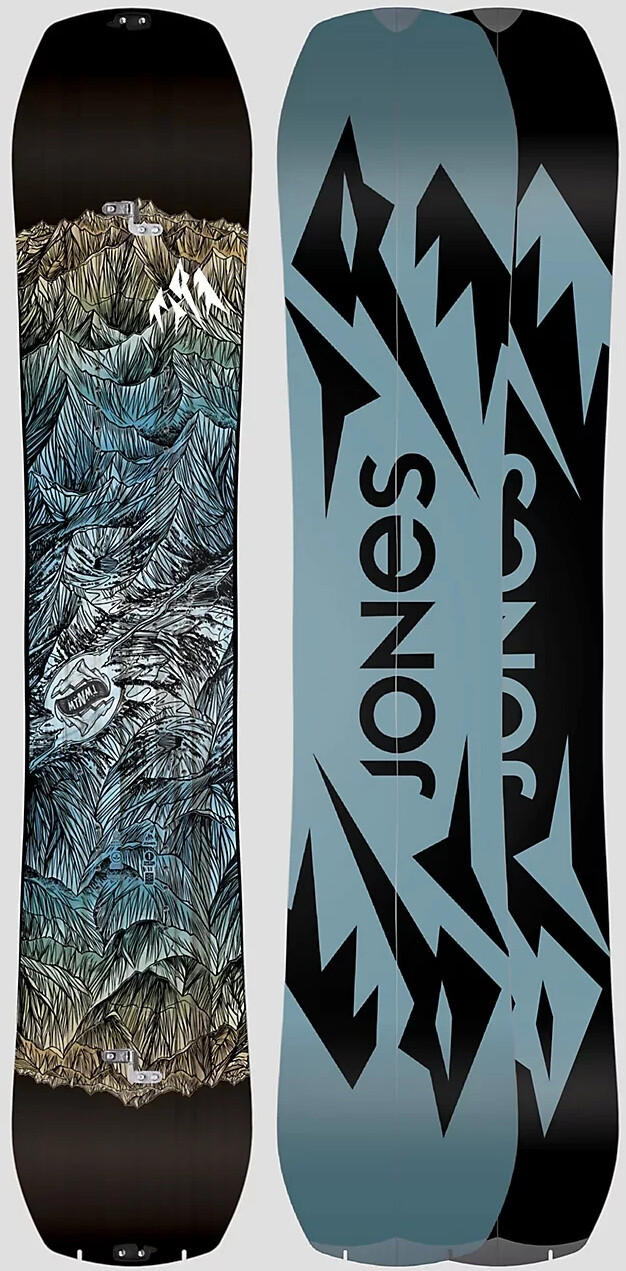
Flex
When selecting a snowboard, one of the crucial factors to consider is the flex, which refers to how rigid or flexible the board is. The flex greatly affects the board's responsiveness, turning ability, and stability on various terrains. If you prefer a more nimble and playful ride, look for a softer flex snowboard. The Burton Rewind Women's Snowboard is an excellent option in this category, featuring a versatile twin shape and a responsive flex pattern that enhances maneuverability.
On the other hand, if you're an aggressive rider who enjoys high-speed carving and powerful edge hold, a stiffer flex board suits you better. The Never Summer Proto Type Two Snowboard has garnered praise for its medium to stiff flex, giving riders more stability and precise control in all conditions. It incorporates additional technologies like the Ripsaw Rocker Camber profile for enhanced snap and power, making it an ideal board for experienced snowboarders.
Camber profile (Flat, Traditional, Rocker, Hybrid)
The camber profile refers to the shape of the snowboard's base and can greatly affect its performance on different terrains. There are several types of camber profiles, each with its own benefits.
Traditional camber boards, such as the Burton Custom Camber Snowboard, feature a slight upward curve in the middle, which helps provide stability and control at high speeds. These boards are great for carving turns on groomed slopes and offer a responsive feel during aggressive riding.
On the other end of the spectrum, there are rocker camber boards like the GNU Riders Choice Asym FW Snowboard. These boards have a reverse camber, meaning the middle of the board is higher off the snow compared to the tips. Rocker camber boards are known for their playful and forgiving nature, making them ideal for freestyle riding and riding in deep powder.
For riders who want the best of both worlds, hybrid camber boards like the Lib Tech TRS Firepower Snowboard offer a combination of camber profiles. These boards typically feature a camber section between the bindings for stability and responsiveness, while the tips have a rocker profile for enhanced float in powder.
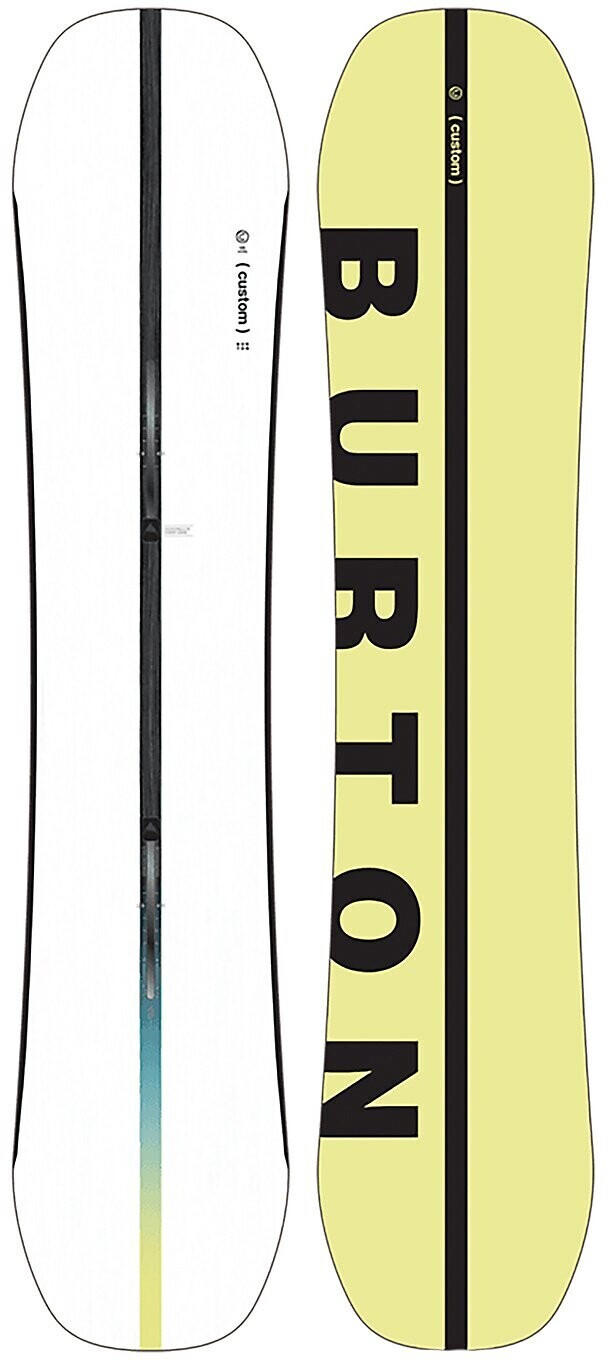
These examples showcase different camber profiles and their corresponding benefits, allowing riders to choose the one that suits their preferred riding style and terrain.
Sidecut radius
The sidecut radius refers to the curve of the snowboard's edges from the tip to the tail. A smaller sidecut radius means a tighter turn radius, making the snowboard more responsive and maneuverable. On the other hand, a larger sidecut radius produces longer, more drawn-out turns that are better suited for carving at high speeds.
For riders who enjoy quick turns and freestyle riding, a snowboard with a smaller sidecut radius would be ideal. The 'Lib-Tech Skate Banana' is a great option to consider as it features a progressive sidecut radius that allows for easy turn initiation and excellent control. Another good choice is the 'Capita Defenders of Awesome', which offers an asymmetric sidecut radius that enhances edge hold and precision.
For those who prefer carving and cruising down the slopes at high speeds, a snowboard with a larger sidecut radius would be more suitable. The 'GNU Riders Choice' is a popular option with a deep sidecut radius that provides exceptional edge hold and stability, making it perfect for carving. Another great choice would be the 'Jones Explorer', which has a versatile sidecut radius that allows for effortless edge-to-edge transitions and smooth turns.
It's important to note that there is no one-size-fits-all solution when it comes to sidecut radius, as it varies based on individual preferences and riding style. Considering the specific characteristics and features of different snowboards can help you choose the best one for your needs.
Base type (Extruded, Sintered)
There are two main types of snowboard bases: extruded and sintered. Extruded bases are made by melting polyethylene pellets and forming them into a sheet. They are less expensive and easier to maintain compared to sintered bases. However, extruded bases tend to have a slower glide and less durability.
On the other hand, sintered bases are made by compressing and heating polyethylene powder. This process creates a denser and more porous base that allows for better wax absorption. Sintered bases offer a faster glide and are more resistant to abrasions, making them preferable for advanced riders who want high-performance boards.
If you're looking for a snowboard with an extruded base, the 'Burton Ripcord' is an excellent option. This all-mountain board is designed for beginners and offers a durable extruded base that requires minimal maintenance. For those seeking a sintered base, the 'Lib Tech T. Rice Pro C2' is a great choice. It features an Eco sublimated TNT sintered base that maintains its speed in various conditions. Both of these snowboards highlight the advantages of their respective base types and demonstrate their suitability for different types of riders.
Edge type (Cambered, Magnetraction)
The two commonly used edge types are Cambered and Magnetraction. Cambered boards have a slight arch in the center, with the tip and tail touching the ground. This offers excellent edge hold and responsiveness, making it ideal for riders who crave precision and speed. One product that exemplifies the benefits of cambered edge type is the Burton Custom, known for its exceptional carving capabilities and powerful rebound.
On the other hand, Magnetraction edge type is found in boards that have a wavy or serrated edge. This design offers enhanced grip and control on icy and hard-packed slopes. The raised edges create multiple contact points with the snow, adding stability and confidence when navigating challenging conditions. A notable product showcasing the Magnetraction edge type is the GNU Riders Choice. Its innovative edge technology delivers unparalleled edge hold, making it a favorite among freestyle riders who want dependable traction in various terrain types.
P-Tex rating
P-Tex is the material used on the base of the snowboard, and its rating determines the board's durability and glide ability. A higher P-Tex rating indicates a stronger and more durable base that can handle rough conditions and last longer. The Jones Flagship snowboard offers a high P-Tex rating of 8500, making it a great choice for riders who enjoy rough terrains and backcountry adventures. Another option is the Burton Custom X snowboard, which boasts a P-Tex rating of 8000, providing excellent durability and performance for freestyle and aggressive riders. These products are examples of boards with high P-Tex ratings, ensuring a long-lasting and dependable ride.
Construction method (Cap, Sandwich)
There are two popular methods: Cap and Sandwich. Cap construction refers to a design where the top of the board extends over the sidewalls, offering a lighter and more flexible board. A great example of a snowboard with cap construction is the Burton Ripcord Snowboard, featuring a Fly Core, Squeezebox Low technology, and a versatile Ride Style. On the other hand, a sandwich construction involves a more traditional design with a solid core and sidewalls running along the edges. This construction method provides excellent durability and stability, making it ideal for intermediate to advanced riders. A remarkable sandwich-constructed snowboard on the market is the Jones Mountain Twin Snowboard, offering a Master Core, Triax Fiberglass reinforcement, and a balanced freestyle/all-mountain profile.

Core material (Wood, Foam)
The core is the heart of the snowboard, and it greatly affects the board's performance and ride feel. Wood cores are often preferred by snowboarders due to their durability, responsiveness, and lively feel on the mountain. For example, the Burton Custom Snowboard features a FSC-certified Super Fly II 700G core, which is a blend of lightweight woods that provides a snappy and poppy ride. Another great option is the Arbor Westmark Snowboard, which has a sustainably-sourced Poplar wood core, offering a smooth and consistent flex that allows for precise board control.
On the other hand, some snowboards utilize foam cores. These cores are lighter and offer a more forgiving and dampening ride. An excellent foam core snowboard in the market is the Never Summer Proto Type Two Snowboard, which features the powerful and lightweight NS superclass HyperCore that provides a versatile and responsive ride. Another notable option is the Capita DOA Snowboard, which has a P2 Superlight core that combines lightweight and dampening qualities for an ultra-responsive and nimble ride.

When choosing a snowboard, it is crucial to take into account the core material as it significantly impacts the performance and feel on the slopes. Wood cores offer durability and responsiveness, while foam cores are lighter and provide a more forgiving ride. By selecting a snowboard with a suitable core material, riders can ensure an optimal experience on the mountain.
Base material (Polyethylene)
Polyethylene is known for its durability, excellent glide, and low-maintenance characteristics. There are different categories of polyethylene bases, which offer varying degrees of speed and performance. Sintered bases are highly porous, making them more absorbent of wax, resulting in increased speed and durability. A popular example of a sintered base snowboard is the Burton Custom Flying V Snowboard, which features a sintered WFO base that provides optimal glide and maintenance-free performance on any terrain. On the other hand, extruded bases are less porous and require more regular waxing, but they offer great durability and resilience. The GNU Playdate Snowboard utilizes an extruded base, suitable for riders seeking a durable and lower maintenance option. Overall, considering the base material is essential to ensure the desired performance and longevity of a snowboard.
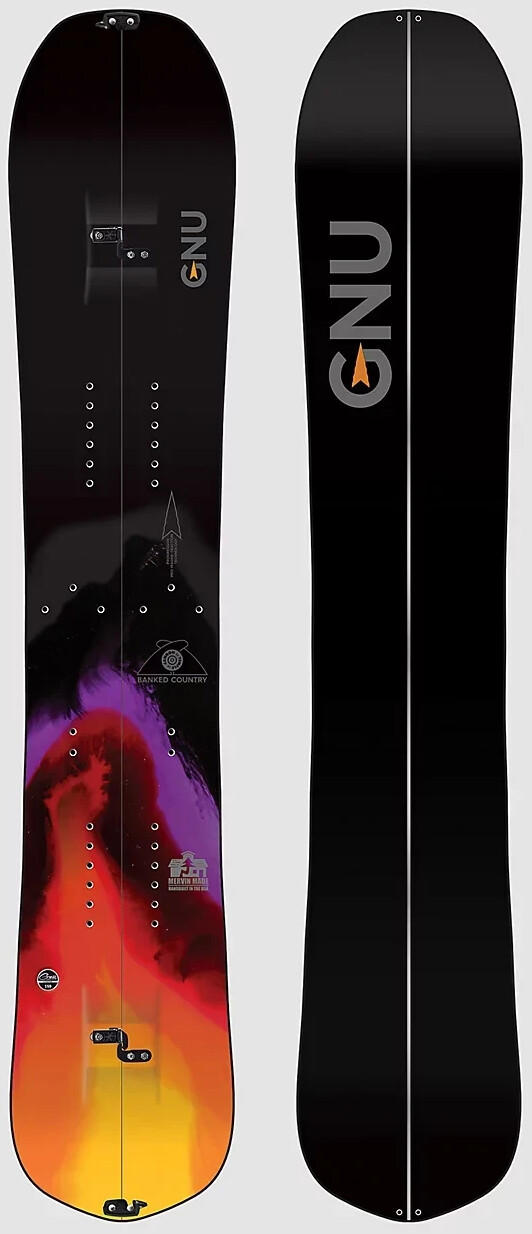
Side wall material
The side walls of a snowboard help with durability and impact absorption. Most snowboards have either a full wood or a full ABS side wall.
If you are looking for snowboards with a full wood side wall, the Jones Flagship Snowboard is an excellent choice. Its side wall uses a triple-density wood core combined with hardwood stringers for extra stiffness and strength. This ensures fantastic edge control and power transmission.
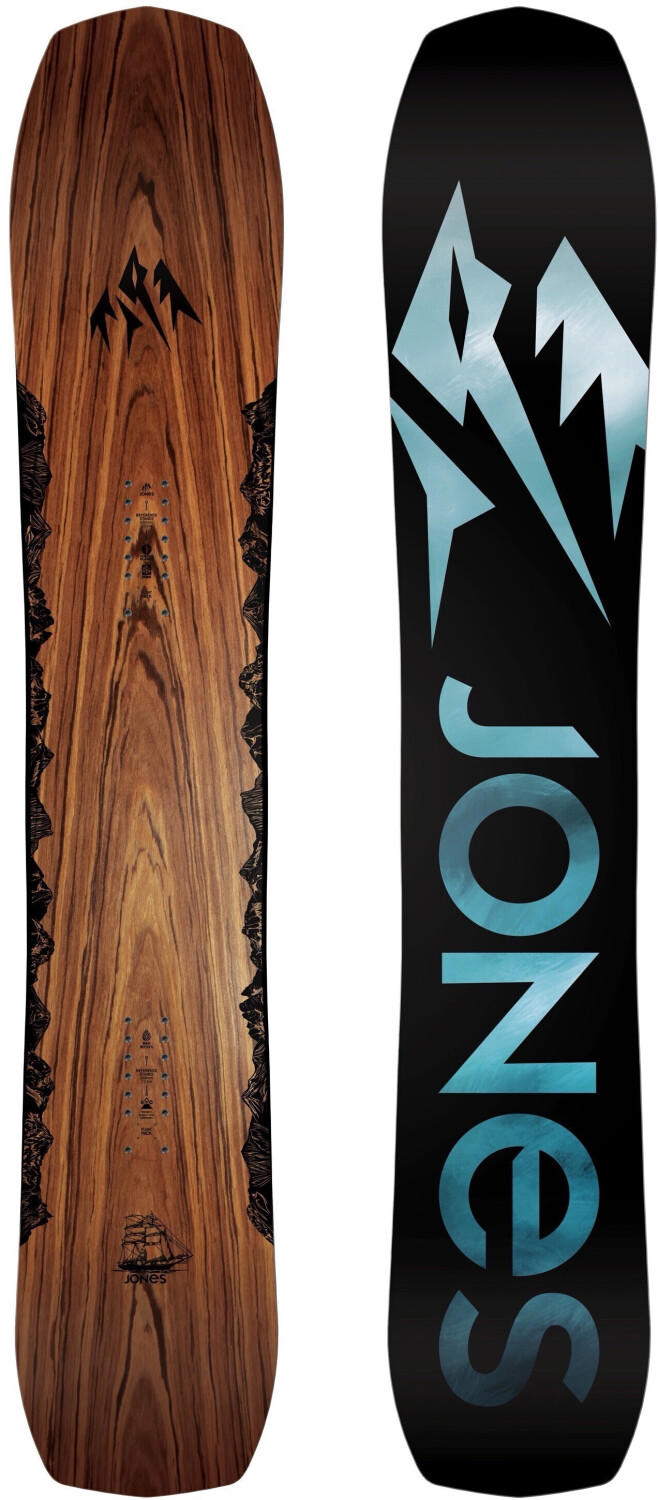

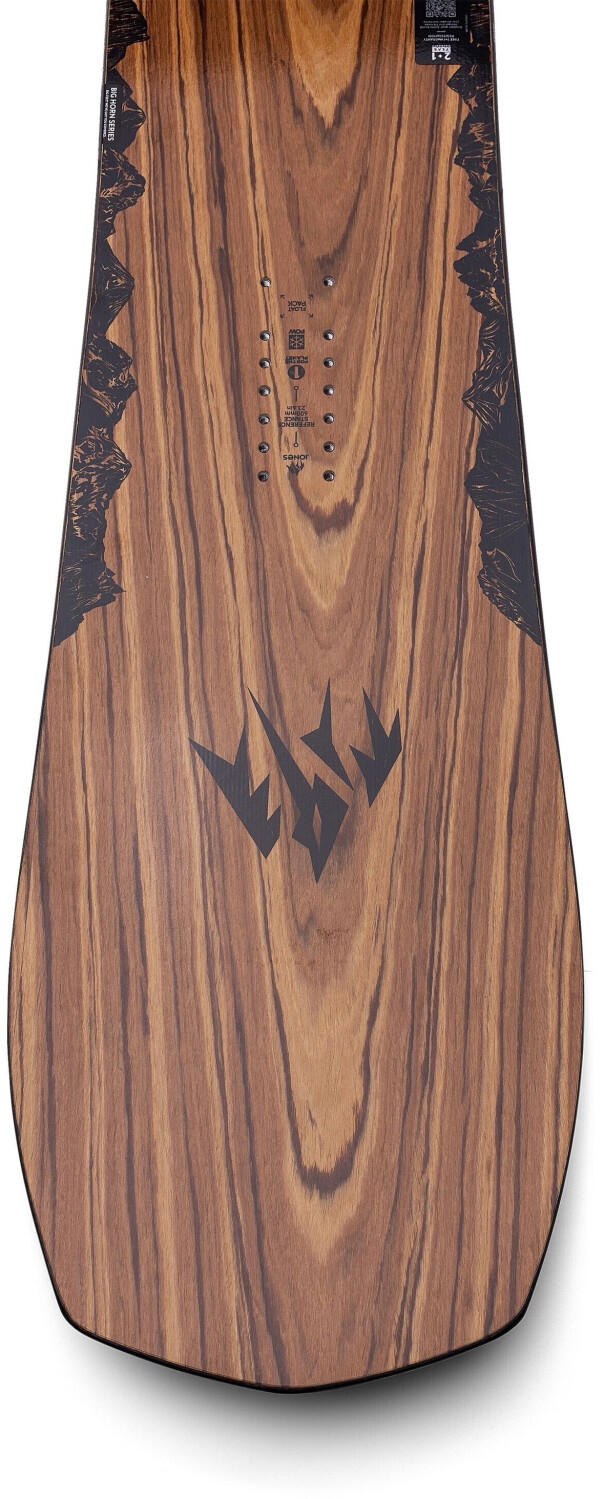
On the other hand, if you prefer a full ABS side wall, the Burton Custom Flying V Snowboard fits the bill. It boasts a sidewall made of 45° carbon highlights along with an ABS plastic laminated in a countered shape for a consistent and predictable ride. This construction enhances the board's durability while maintaining its playful nature and responsiveness.
Effective edge length
The effective edge length refers to the part of the snowboard that comes into contact with the snow when carving or turning. A longer effective edge provides more stability and better edge hold, while a shorter effective edge allows for quicker turns and more agility. For riders who prioritize stability and control at higher speeds, snowboards with longer effective edges are ideal.
For those looking for a snowboard with a longer effective edge length, a great option is the Lib Tech Attack Banana with a length of 160 cm. It features a C2 hybrid contour, which combines a rocker and camber to provide excellent edge hold and stability. Another option is the Ride Machete GT, which comes in lengths up to 163 cm. It features a hybrid twin shape and a carbon slime walls technology for enhanced response and increased edge hold.
On the other hand, riders seeking a shorter effective edge length can consider the Burton Custom Flying V, which is available in lengths as short as 148 cm. This snowboard has a flying V rocker profile, which combines rocker and camber to provide a playful and forgiving feel while maintaining edge control. Another option is the Gnu Money, which comes in lengths down to 149 cm. It features a BTX rocker profile and a soft flex for easy maneuverability and quick, nimble turns.
Stiffness
The stiffness affects the board's flex and responsiveness, catering to your riding style and preference. There are three main levels of stiffness: soft, medium, and stiff.
For beginners or those who prefer a more forgiving ride, Burton Feather Women’s Snowboard is a great choice. With its soft flex, it offers easy maneuverability and a forgiving feel on the slopes. Another option would be the Capita Ultrafear Snowboard, known for its medium flex, which provides a balance between playfulness and stability. This board is ideal for riders who like to tackle a variety of terrain and want a versatile ride.
On the other hand, advanced riders will usually opt for a stiffer board, like the Nitro Pantera Snowboard. With its stiff flex, this board excels in high-speed carving and provides excellent power and stability. The Capita Kazu Kokubo Pro Snowboard is also worth considering for experienced riders, offering a stiff flex that allows for precise control and responsiveness in all conditions.
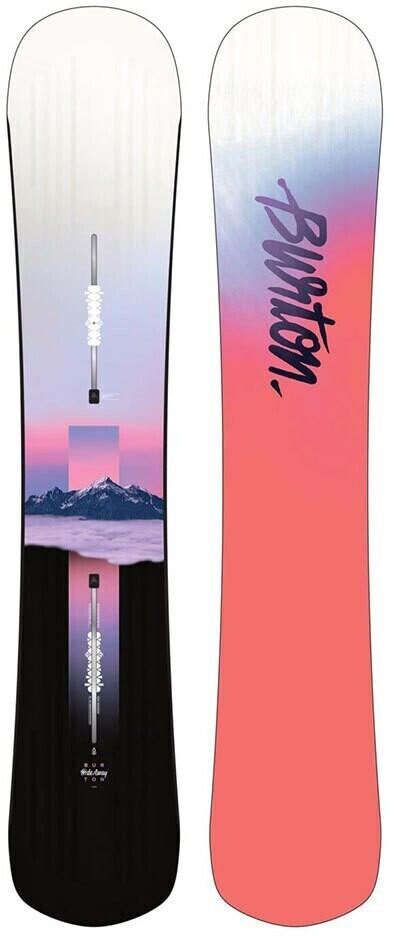
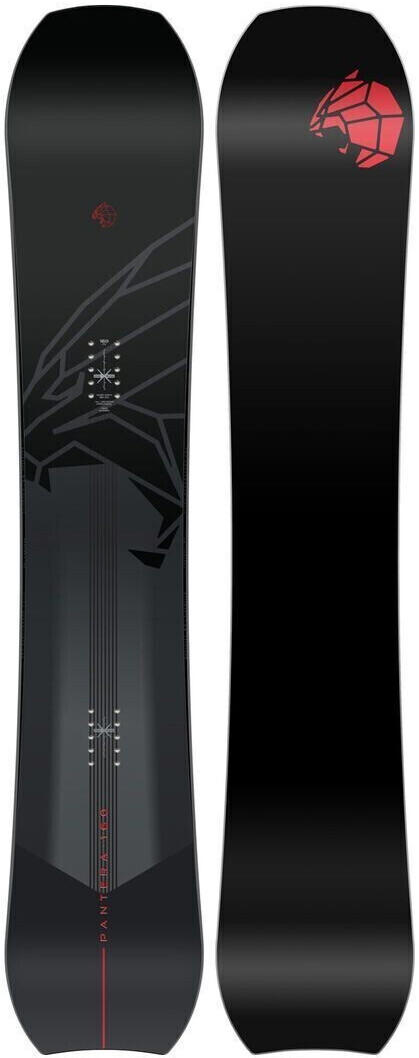
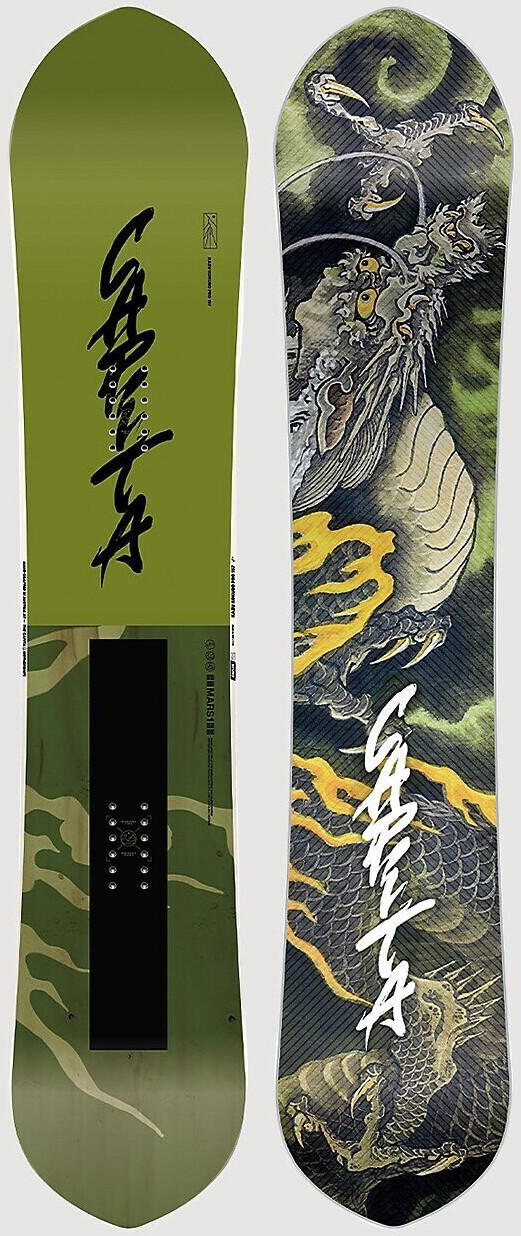
Remember that each rider has their own preference when it comes to stiffness, so it's important to consider your style and skill level when making a decision.
Weight
Lighter boards are easier to control and offer a more responsive ride, making them suitable for beginners or freestyle riders who prioritize agility. One excellent option to consider for a lightweight snowboard is the Burton Flight Attendant Snowboard. This board features a lightweight Super Fly II™ core with Dualzone™ EGD™ technology, strategically designed for reducing weight while maintaining stability and energy. Another great choice for lightness is the Lib Tech TRS Snowboard. It incorporates the lightweight Horsepower construction, utilizing a blend of sustainable woods along with carbon and basalt fibers, resulting in a featherweight board with enhanced pop and response. Both these options provide exceptional handling and responsiveness on the slopes, ensuring a memorable ride.

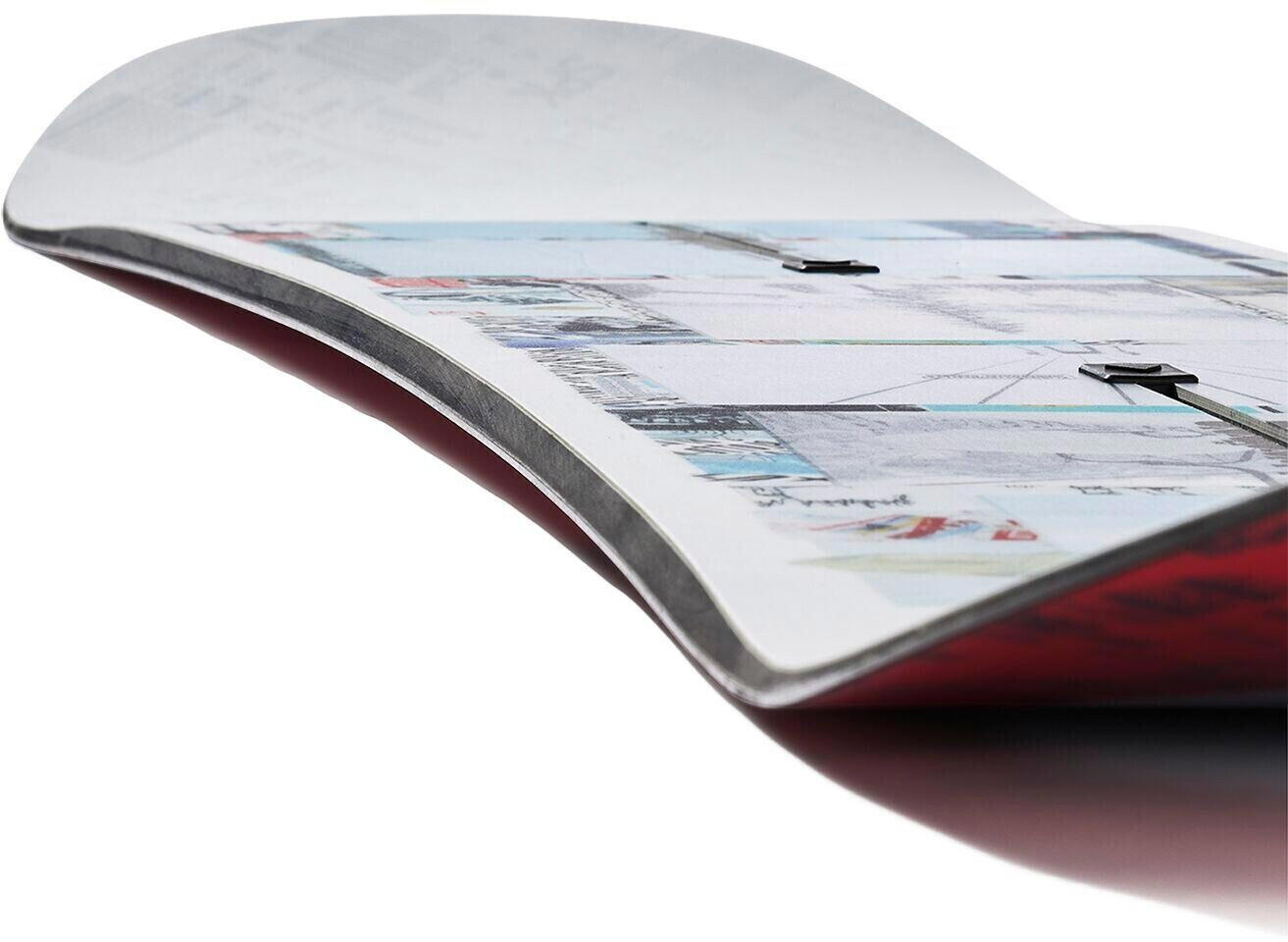
Bindings compatibility
Bindings play a vital role in your snowboarding experience, as they keep your feet attached to the board. There are different types of bindings available on the market, and it is essential to ensure that the ones you choose are compatible with the snowboard you intend to buy.
One example of snowboard bindings known for their compatibility is the Burton EST Snowboard Bindings. These bindings are specifically designed for Burton's Channel System, a snowboard design feature that allows ultimate compatibility and fine-tuning. Another excellent option is the Flow NX2-GT Hybrid Snowboard Bindings, which are compatible with the traditional 4x4 mounting system and also come with convenient features like an N.A.S.T.Y strap and a Hybrid Power-Cap Strap for maximum comfort and performance.
It is worth noting that there are several other bindings available on the market that cater to different snowboard binding mounting systems, such as the 3D hole pattern, 5th Element mounting system, or the Re:Flex system. It is necessary to thoroughly research the bindings that correspond to your snowboard's mounting system to ensure compatibility and get the most out of your snowboarding experience.
Terrain suitability (Powder, Park, Groomed)
Different snowboards are designed with specific features that make them better suited for certain terrains. If you are a powder enthusiast who loves catching fresh tracks off-piste, you will want to look for a powder-specific snowboard. The Jones Storm Chaser is a great option with its wide nose and swallowtail design, providing maximum float and maneuverability through deep snow. It also features a directional rocker profile that enhances stability and edge hold on steep slopes. For park riders who spend their time hitting jumps, rails, and halfpipes, a freestyle snowboard would be ideal. The Burton Custom Flying V is a popular choice among park riders as its twi-fex design and rocker-camber-rocker profile offer the perfect combination of flex, pop, and stability for performing tricks. Lastly, if you mostly ride on groomed slopes and enjoy carving turns at high speeds, an all-mountain snowboard would best suit your needs. The Never Summer Proto Type Two is a versatile all-mountain board with a medium flex and hybrid camber profile, providing excellent edge control and stability on both packed snow and icy conditions. Overall, understanding the terrain you will be riding on and choosing a snowboard that is specifically designed for that terrain will significantly enhance your riding experience.
Stability
To ensure stability, look for snowboards with a sturdy and reliable construction, such as the Burton Custom X or the Never Summer West Bound. These snowboards boast advanced features like a freeride-oriented shape, reinforced edges, and a multiple-layer wood core, providing exceptional stability and precision riding. Additionally, the Jones Flagship and Lib Tech TRS are well-regarded for their powerful and stable performance, thanks to their hybrid camber profiles that offer reliable edge hold and control on various terrain types. As you explore different brands and models, bear in mind that stability can vary depending on the length and flex pattern of the snowboard, so consider your individual riding style and ability when making a final choice.
Durability
Look for snowboards constructed with high-quality materials like a strong core, reinforced edges, and durable base. The Burton Custom X snowboard is an excellent option known for its outstanding durability. It features a strong FSC™ Certified Dragonfly™ 600G core, which offers a lightweight yet robust foundation. With a durable Sintered WFO base and sturdy Ultrathin Engineered Carbon laminates, this snowboard can withstand the demands of aggressive riders and various mountain conditions. Additionally, the Jones Flagship is another durable snowboard worth considering. It boasts a sturdy FSC™ Engineered Veneer Topsheet and Traction Tech 3.0 edges, providing exceptional grip and durability on icy terrain.
Pop
Pop refers to the board's ability to snap back to its original shape after being flexed. A snowboard with good pop will provide a lively and responsive feel, allowing riders to effortlessly initiate tricks and jumps.
An excellent example of a snowboard with impressive pop is the Capita Defenders of Awesome that features a traditional camber profile, carbon inline tubes, and an FSC certified Select Core. This board delivers powerful and snappy ollies, making it ideal for freestyle riders looking to maximize their pop. Another great option is the Never Summer Proto Type Two, built with a Ripsaw Rocker Camber Profile, carbon VXR laminates, and Bi-Lite fiberglass, giving this board exceptional pop and stability for riders who crave the perfect platform to launch off. Both of these boards are top choices for riders seeking maximum pop and performance on the slopes.
Maneuverability
A highly maneuverable snowboard allows riders to navigate easily through tight spaces, perform quick turns, and execute tricks with precision. If you prioritize maneuverability, look for snowboards with a shorter length and a softer flex. One example that fits this description is the Burton Custom Flying V snowboard, known for its playful and agile characteristics. Its versatile twin shape combined with the Flying V profile offers great maneuverability for all-mountain riding and freestyle fun. Another option is the Lib Tech Skate Banana, renowned for its effortless maneuverability due to its rocker profile and asymmetrical shape, making it an excellent choice for freestyle riding enthusiasts.
Turn initiation
The turn initiation refers to how quickly and easily a snowboard can initiate turns. It is influenced by factors such as the shape of the board, the flex, and the type of camber used. For riders who prioritize a fast and responsive turn initiation, the Burton Custom X Snowboard is an excellent choice. This board features a traditional camber profile with a stiffer flex, providing quick edge-to-edge response and precise control. Another option is the Jones Ultra Mountain Twin Snowboard, which is designed for intermediate to advanced riders seeking a versatile board with a fast and smooth turn initiation. It incorporates a more forgiving hybrid camber profile, allowing for effortless maneuverability and better stability during initiation.
Carving ability
A snowboard's carving ability refers to how well it can hold an edge and make smooth, precise turns on hard-packed or groomed snow. For riders interested in maximizing their carving performance, there are several products on the market that are worth considering.
One standout option is the Arbor Bryan Iguchi Pro Camber Snowboard. This board, available in multiple lengths, boasts a medium flex and a powerful carving style due to its camber profile. The camber profile provides excellent edge control and responsiveness, allowing riders to carve with precision and confidence.
Another great choice for carving enthusiasts is the Jones Carbon Solution Splitboard. Developed in collaboration with big mountain rider Jeremy Jones, this splitboard features a carbon construction that enhances edge-to-edge response and stability when carving at high speeds. Its directional shape and hybrid camber profile provide excellent grip and control on any terrain. This board is perfect for riders who enjoy exploring backcountry terrain while maintaining exceptional carving capabilities.
For intermediate riders looking to improve their carving skills, the Burton Instigator Snowboard is a highly recommended option. With a soft flex and a tapered directional shape, this board is forgiving and easy to maneuver. Its flat-top profile offers stability and edge hold, making it ideal for quick edge-to-edge transitions and maintaining control while carving.
Lastly, for advanced riders seeking optimal carving performance, the Never Summer Proto Type Two Snowboard is a top contender. This board's hybrid rocker profile with camber enhances stability and edge control while still allowing for easy turn initiation. Its mid-firm flex and asymmetrical shape enhance maneuverability and responsiveness, making it the perfect choice for those looking to carve up the slopes with style and precision.

When selecting a snowboard for its carving abilities, these aforementioned models offer excellent options that cater to riders of different skill levels and preferences.
Edge hold
The edge hold refers to how well the snowboard maintains its grip on the snow when making turns, especially on icy or hardpacked conditions. There are different types of edge hold technologies available in the market. For instance, the Burton Deep Thinker features Frostbite Edges, which extend out slightly beneath the bindings for enhanced edge control and grip. Another option is the GNU Riders Choice, equipped with Magne-Traction technology, which features a serrated edge design to provide exceptional edge hold and control on icy terrain. Additionally, the Capita Scott Stevens Pro utilizes an Underbite technology, where the binding area is pulled inwards to create a narrower waist and encourage better edge hold. These snowboards are specifically designed to excel in edge hold and are worth considering if that is a top priority for you.
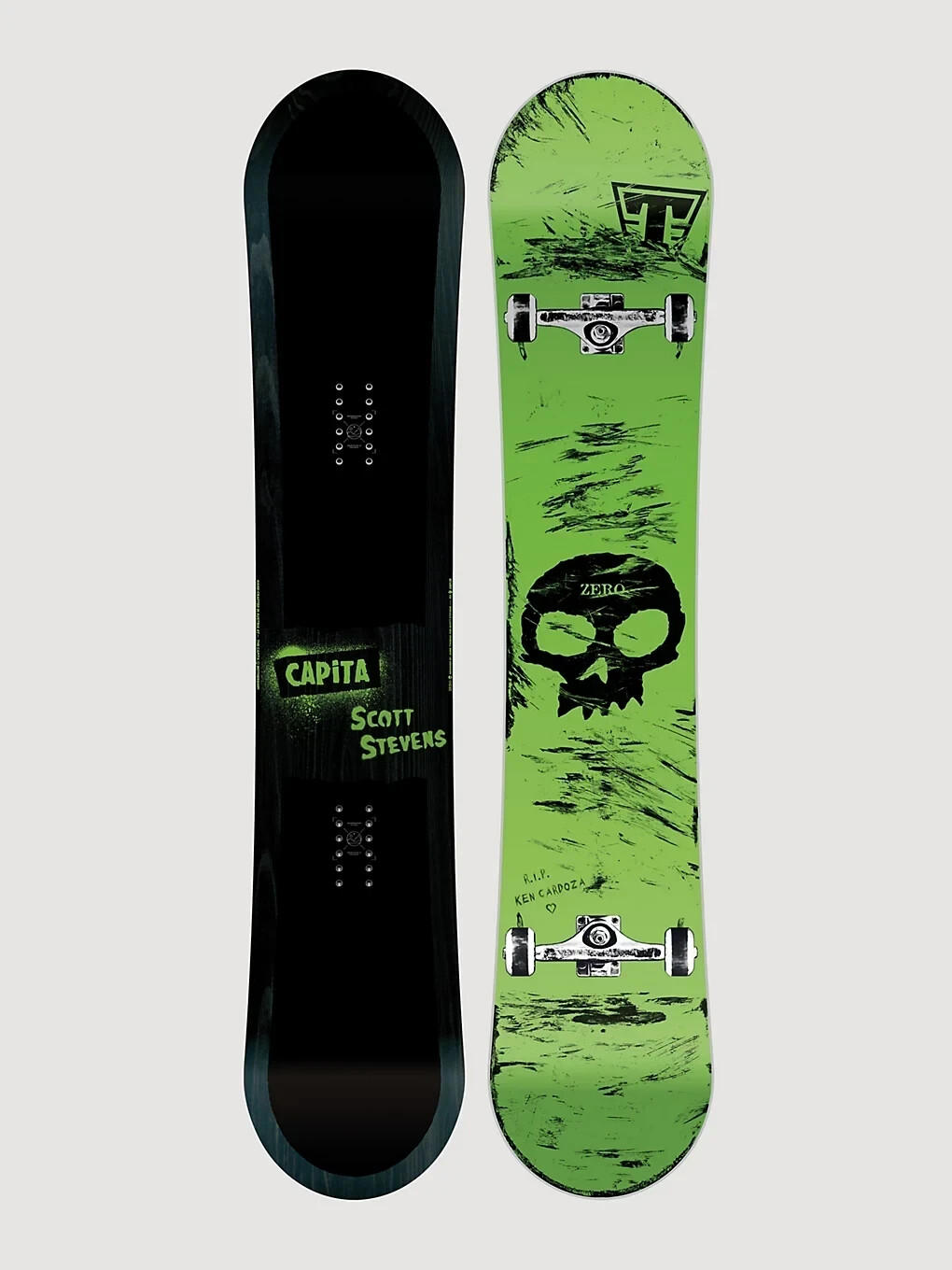
Flex pattern
The flex refers to the board's stiffness and determines its performance on different terrains. There are generally three types of flex patterns: soft, medium, and stiff.
For beginners or riders who prefer a playful and forgiving ride, a snowboard with a soft flex pattern is recommended. A great example of a snowboard with a soft flex is the Burton Feather which is designed for effortless, smooth turns and improved control. Another option is the Ride LowRide, which has a soft flex pattern that enhances maneuverability and makes it easier to learn and progress.
Intermediate to advanced riders would benefit from a snowboard with a medium flex pattern. The Capita Outerspace Living is an excellent choice, offering a blend of stability and responsiveness with its medium flex. Similarly, the Jones Explorer provides a medium flex that balances solid control with a playful feel, making it ideal for versatility on various types of terrain.
Finally, if you are an experienced rider who enjoys charging down steep slopes and carving at high speeds, a snowboard with a stiff flex pattern is the way to go. The Never Summer Chairman X features an ultra-stiff flex for powerful performance and exceptional stability at high speeds. Another option is the Lib Tech T.Rice Pro HP, which boasts a stiff flex enabling maximum control and stability during aggressive riding.
It's important to consider your skill level, riding style, and preferred terrains when choosing the snowboard flex pattern that best suits your needs.
Spins ability
The shape and design of the snowboard play a crucial role in providing stability and control during spins. Freestyle or park boards are typically ideal for spins, as they are shorter, lighter, and equipped with features such as a twin shape and a soft flex. A great example that corresponds to this category is the 'Burton Kilroy Twin', which offers a true twin shape and a medium-soft flex, allowing for easy spins and consistent landing. Another suitable option is the 'GNU Head Space', a freestyle board that features a twin shape and medium flex, ensuring optimal maneuverability while spinning.
Different segments of snowboards focus on Spin ability, catering to specific skill levels or riding styles. For intermediate riders, the 'Rome Gang Plank' is a solid choice. It combines a directional twin shape with a medium flex, providing stability for spins while allowing for smooth and easy turn initiation. Advanced riders looking for high-performance spins may opt for the 'Capita The Outsiders', which offers a true twin shape, a soft to medium flex, and a lightweight construction, allowing for maximum pop and control during spins.

Playfulness
Playfulness refers to the board's ability to deliver a fun and enjoyable riding experience, allowing the rider to easily manipulate the board and perform tricks effortlessly. Snowboards with a softer flex tend to be more playful, as they provide a greater level of torsional flex and allow for easier turn initiation and maneuverability. If you are looking for a playful snowboard, the Burton Custom Flying V stands out with its versatile all-mountain design and potent playfulness. It features Burton's Flying V profile, which combines rocker and camber for excellent float in powder while maintaining responsiveness and edge hold. Another option is the Gnu Space Case, which offers a soft to medium flex, making it a playful board suitable for park and freestyle riding. This board benefits from Magnetraction technology, providing exceptional edge hold on icy conditions, and its true twin shape ensures you can ride switch seamlessly for maximum playfulness on all types of terrain.
Float in powder
The first is the shape of the board, specifically the nose and tail design. A popular option is the Jones Flagship snowboard, which features a directional shape with a spoon-shaped nose and a slightly tapered tail. This design enhances float by dispersing snow and creating a surf-like feel.
Another aspect to consider is the board's profile. The Burton Deep Thinker snowboard has a camber-dominant profile that provides great float in powder. Camber is the upward curve in the middle of the board that improves responsiveness and provides exceptional power and pop. When combined with a directional shape and a setback stance, such as the Capita Mercury snowboard, riders can effortlessly glide and stay afloat in deep powder.
For riders who value maneuverability in tighter spaces such as trees, a shorter and wider snowboard like the Never Summer Insta/Gator could be a great choice. This board has a super wide width and a flex pattern that balances stability with a fun and playful ride. It enhances float with its wider platform while providing a quick turn initiation.
In conclusion, to ensure the best float in powder, look for snowboards with directional shapes, spooned noses, and slightly tapered tails. Consider camber-dominant profiles for added power and responsiveness. Don't forget to determine the type of terrain you'll be riding on, as characteristics like width and flex also play a significant role in powder performance.
Response
The response of a snowboard refers to how quickly and precisely it reacts to a rider's movements and inputs. Snowboards with a high level of response are generally preferred by experienced and aggressive riders, as they provide quick maneuverability and precise control. One great example of a highly responsive snowboard is the Burton Custom Flying V. This board features a hybrid camber profile with rocker in the middle and camber zones under the bindings, enabling exceptional edge hold and rapid response. Another option is the Never Summer Proto Type Two, which boasts an asymmetrical shape and a carbon fiber wrap that enhances responsiveness and power transfer, making it ideal for aggressive riders seeking high-speed stability and edge-to-edge control. These boards offer excellent response to ensure a thrilling and dynamic riding experience.
Control
The control of a snowboard is determined by various elements such as the flex, shape, and width of the board. A stiffer board provides more stability and control at high speeds but may be less forgiving for beginners. On the other hand, a softer board offers increased maneuverability and forgiveness, making it ideal for those who are still developing their skills.
One excellent example of a snowboard that prioritizes control is the Burton Custom Flying V. This all-mountain board features a versatile flex pattern and a directional shape, allowing riders to effortlessly navigate through different terrain while maintaining precise control. With its Frostbite Edges and Super Sap epoxy, the board offers outstanding grip on icy conditions, enhancing control even further. Another great option for advanced riders looking for superior control is the Jones Flagship. This premium board boasts a medium-stiff flex and a unique directional shape, offering exceptional responsiveness and stability for carving through challenging terrain. The addition of a Magnetraction edge design provides excellent control even in icy or variable snow conditions.
Speed
If you thrive on fast descents and enjoy the thrill of superb gliding capabilities, you should look for snowboards designed to excel in speed. One such recommendation is the Burton Custom X Snowboard. This snowboard features a Directional Camber profile that enhances speed by providing precise control and superior edge control. Its Ultra-Light Core significantly reduces weight, allowing for lightning-fast acceleration and escellent energy transfer. Another speed-oriented option is the Jones Ultra Mountain Twin Snowboard. This board combines a Camber Bend with its Fusion Tech construction, offering fast and precise stability even at high speeds.
Other snowboards that cater to speed enthusiasts include:
- K2 Simple Pleasures Snowboard: Designed with a fast Directional Rocker profile and a
Bambooyahcore for an effortless and smooth ride. - Capita Black Snowboard of Death: With its
Freeride FKprofile andCarbon Fiber Beams, this board maximizes speed and stability. - Salomon Ultimate Ride Snowboard: Features a blend of Camber/Rocker profile,
Quadralizer Edgetechnology, andPopster Coreto enhance responsiveness and speed.

Ultimately, prioritize snowboards with specialized features for speed, such as camber profiles and lightweight materials. It's essential to go through each product's specifications to ensure it aligns with your intended riding style and performance preferences.
Catch-free ride
A catch-free ride refers to a snowboard's ability to minimize catching an edge, making it easier to maneuver and control. One excellent example of a board that offers a catch-free ride is the Burton Ripcord. Equipped with Burton's Flat Top bend, this board features a flat profile between the bindings, providing stability and balance. Additionally, the GNU Antigravity is another great choice. Its Original Banana profile allows for a perfect blend of rocker and camber, ensuring a catch-free ride while still maintaining responsiveness and control.
In terms of segments, there are all-mountain boards that excel in offering catch-free rides as well. The Never Summer Snowtrooper is a versatile all-mountain option with a hybrid profile, giving it both rocker and camber for exceptional edge hold and the creation of a catch-free experience. Another all-mountain board to consider is the Lib Tech Skate Banana. Its Original Banana contour provides playfulness and power, delivering a catch-free ride on any terrain.
Aesthetics
Snowboards have evolved beyond the typical monochromatic design to offer an array of eye-catching graphics and patterns. If you are someone who wants a bold and vibrant design on your snowboard, you might consider the Jones Twin Sister Snowboard which features beautiful, nature-inspired artwork by renowned designer Bryan Iguchi. Another option for aesthetic-conscious riders is the Capita Outer Space Living Snowboard which boasts a visually striking graphic that incorporates elements from the cosmos. For those who appreciate a more minimalistic and elegant design, the GNU Asym Ladies Choice Snowboard offers a clean and sleek appearance with a stylized logo. Remember that your snowboard's aesthetics can reflect your personal style and preference, making every ride a visually appealing experience.
Segmentation Group:
- Adventure Seekers: If you are an adrenaline junkie and prefer snowboarding in challenging terrains, you might consider the Ride Warpig Snowboard. With its striking boar-inspired graphics, it exudes power and provides the control needed to tackle any mountain.
- Freestyle Enthusiasts: For those who enjoy park riding and freestyle riding, the Burton Custom Flying V Snowboard is a great choice. Its vibrant graphics and playful design make it a favorite among freestyle riders.
- Freeride Lovers: If you love taking on backcountry or powder conditions, the Ride Berzerker Snowboard is worth considering. Its visually captivating graphic captures the spirit of the mountains, enhancing your experience on each exhilarating downhill run.
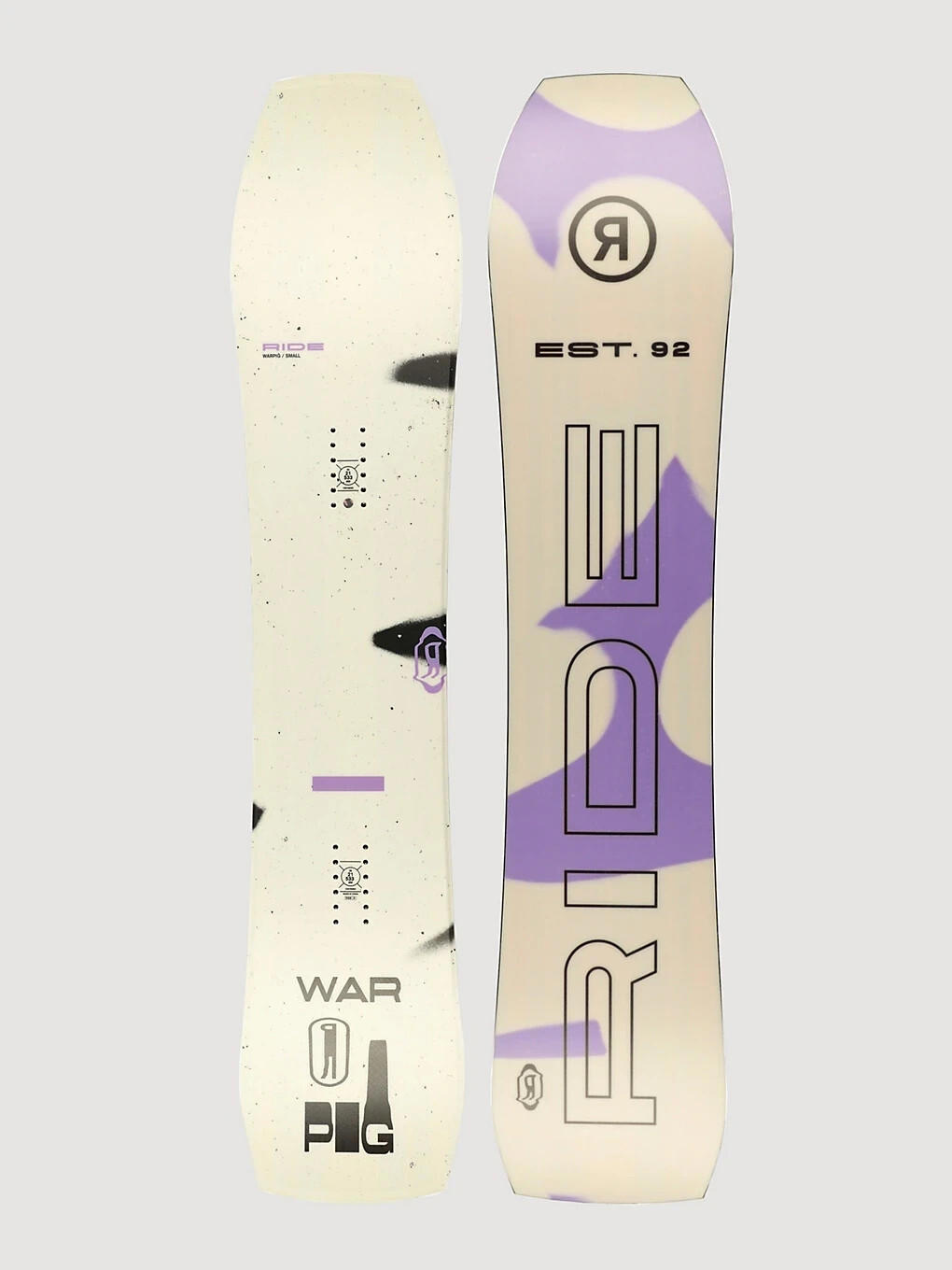
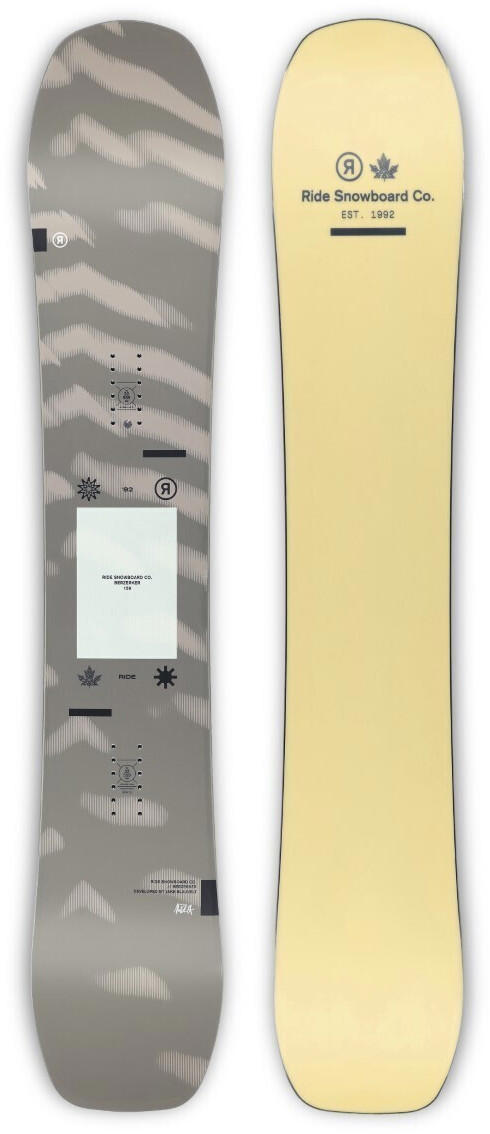
Price
It is important to determine your budget and prioritize your needs accordingly. There are various price ranges available in the market, catering to different skill levels or specific preferences. In the lower price range, the Burton Clash Snowboard is an excellent choice for beginners and budget-conscious snowboarders. It offers a directional shape, full camber profile, and a medium-soft flex for easy turns and forgiveness without sacrificing stability. Moving up the price ladder, the Lib Tech Travis Rice Pro Snowboard stands out as a high-performance board for intermediate to advanced riders. It comes with a C2 hybrid profile that combines camber and rocker for a balance of pop, control, and maneuverability. Additionally, it features Magne-Traction edges to enhance grip and stability on icy slopes. Remember, finding the best snowboard for you at a reasonable price will depend on your individual preferences and skill level.
Variety of brands
Different brands offer their unique features, designs, and technology, providing riders with a range of options to choose from. Some popular snowboard brands include Burton, Lib Tech, and Capita.
Burton, one of the leading snowboard brands, is known for its high-quality craftsmanship and cutting-edge technology. Their Burton Custom model is a versatile board that is suitable for riders of all skill levels. It offers a medium flex and features a directional shape, allowing for ease of turning and stability on different terrains. However, Burton snowboards may be on the pricier side compared to other brands.
Lib Tech, on the other hand, is known for its environmentally-friendly and durable snowboards. The Lib Tech Skate Banana is a freestyle-specific snowboard that features a true twin shape, making it perfect for riders who enjoy park and urban riding. The board also incorporates Magne-Traction technology, which provides enhanced edge control and increased stability. However, some riders may find Lib Tech snowboards to have a slightly stiffer flex compared to other brands.
Capita is another popular snowboard brand that offers a wide range of boards for all riding styles. The Capita Mercury is an all-mountain board that caters to advanced riders. It features a medium-stiff flex and a hybrid camber profile, providing excellent pop, stability, and control. However, some riders may find that Capita snowboards require a bit more effort to turn compared to other brands.
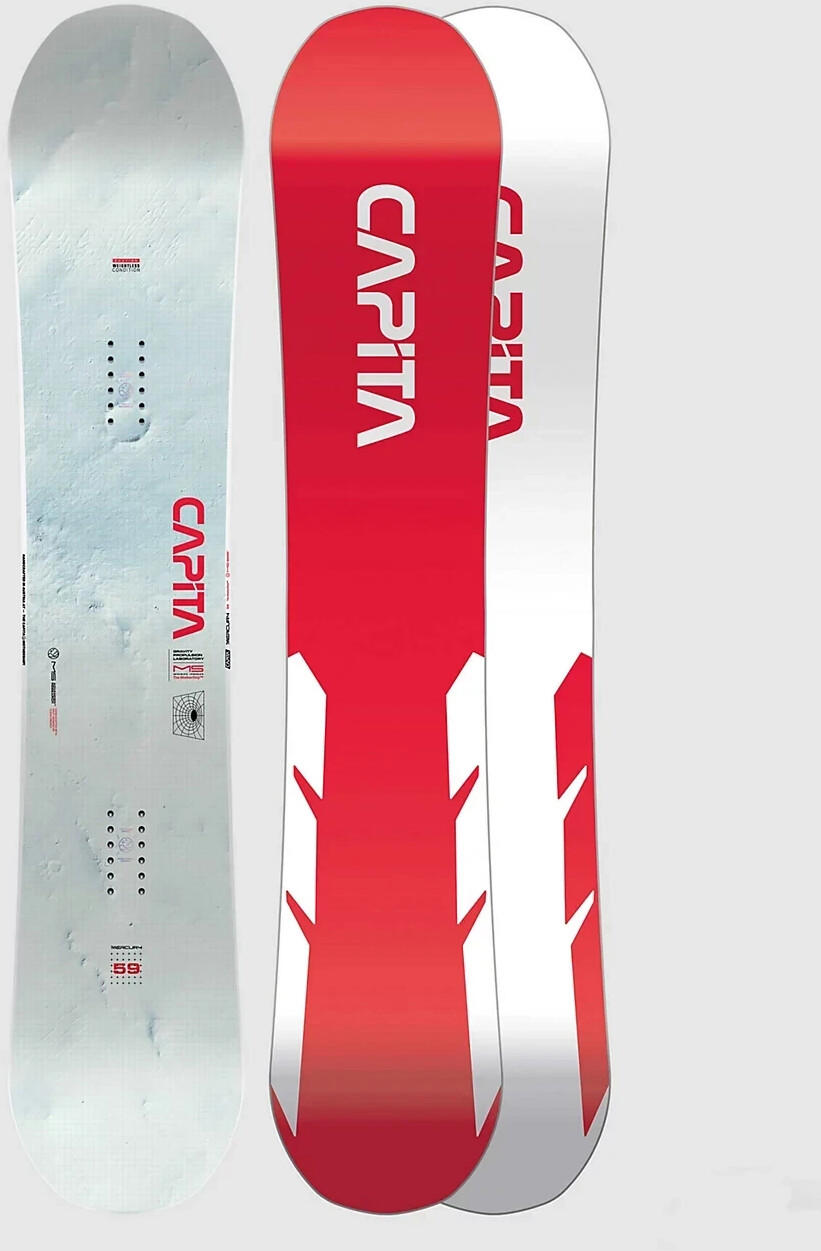

In summary, when considering the variety of brands available, riders should consider their specific needs and preferences, such as riding style, skill level, and budget, in order to choose the best snowboard brand for them.